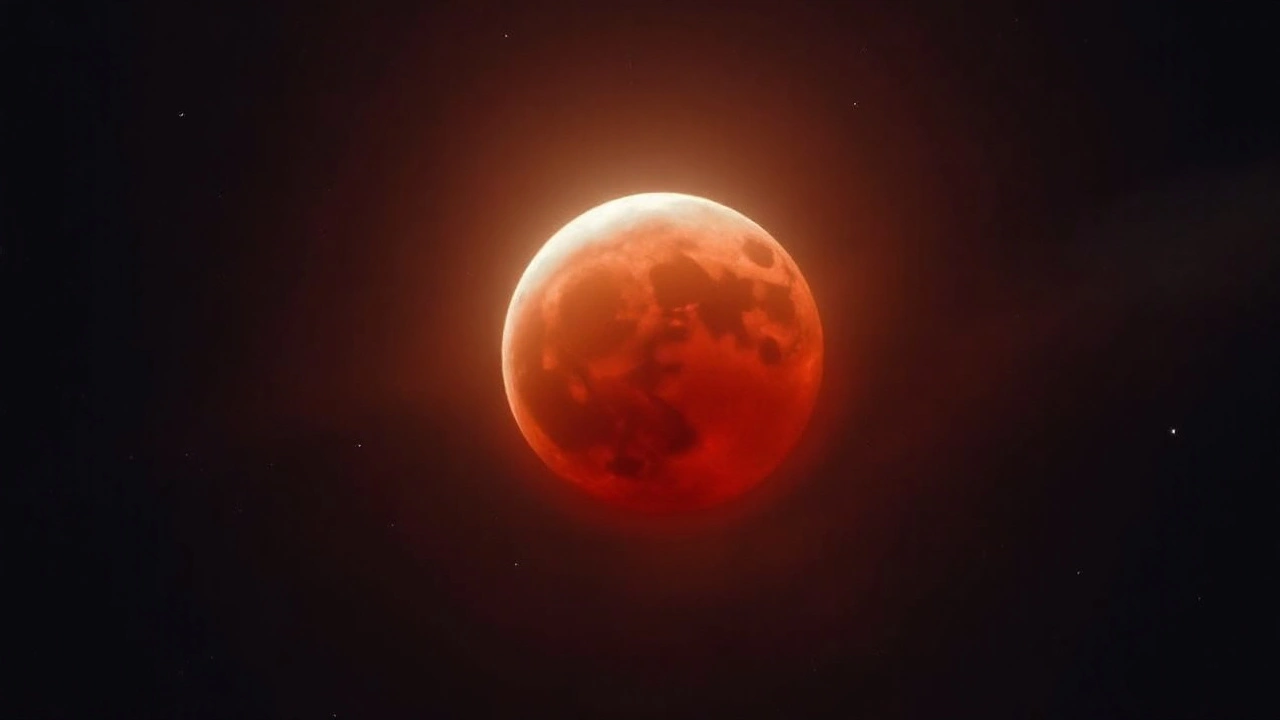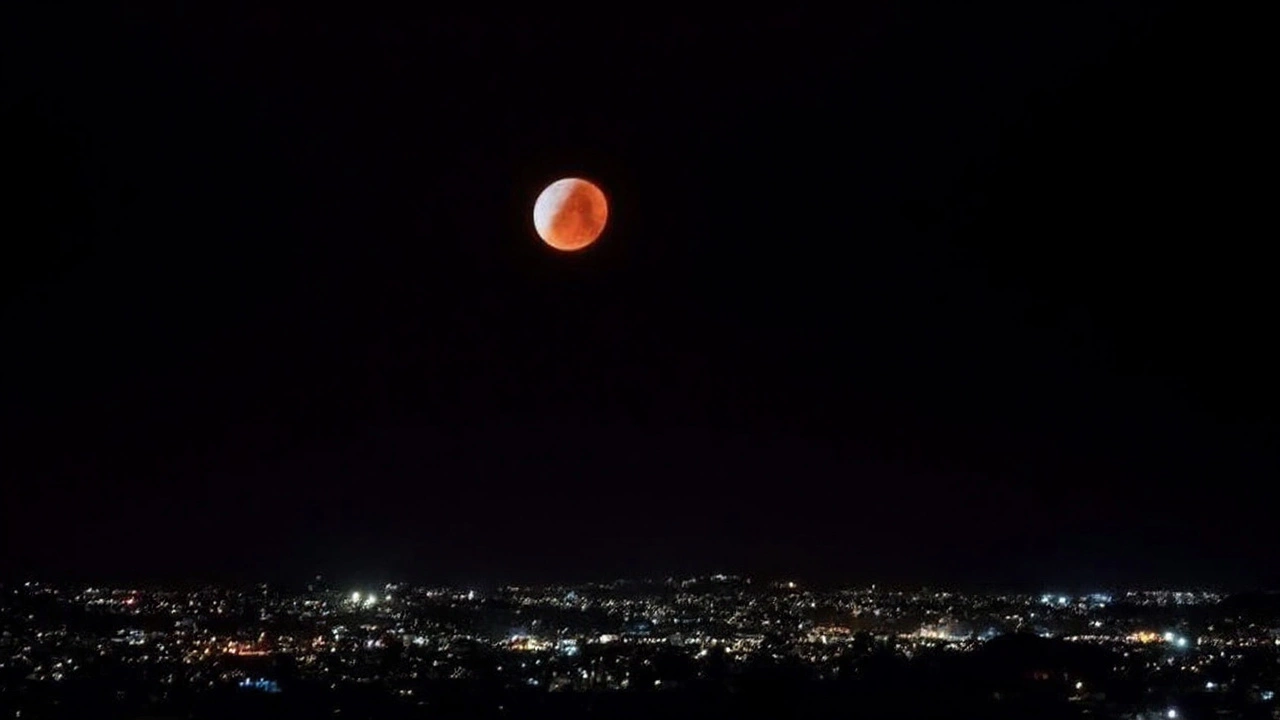Blood Moon Lunar Eclipse Skips Michigan: Why It Vanished From U.S. Skies and When to Watch Next
 Sep, 8 2025
Sep, 8 2025
Three-quarters of the planet watched the Moon turn copper-red this weekend. Michigan saw… nothing. The total lunar eclipse overnight Sunday into early Monday, September 7–8, 2025 (local dates vary by time zone), never rose for the Americas, putting the Great Lakes State squarely on the sidelines.
The show was prime-time across Asia and Western Australia, with much of Europe also getting a clear window. Totality lasted about 82 minutes. Based on the published timeline, mid-eclipse fell around 2:11 p.m. EDT, with totality running roughly from 1:30 to 2:52 p.m. EDT—squarely during Michigan’s daylight hours, when the Moon was below the horizon.
If you’re wondering why the Moon looked red, thank Earth’s atmosphere. During a total lunar eclipse, the Moon slips into our planet’s dark umbral shadow. Sunlight skims through the edges of Earth’s atmosphere and gets filtered; shorter blue wavelengths scatter away, while red and orange light bend into the shadow and paint the lunar surface with that eerie glow. Dust, smoke, or volcanic aerosols can deepen the color, which is why no two eclipses look exactly alike.
Why Michigan missed the eclipse
Lunar eclipses are global events, but visibility isn’t. You can only see one when your side of Earth is in nighttime and the Moon is above your local horizon during the key phases. This time, the timing favored Asia, Western Australia, and Europe. The Americas were on the daytime side of Earth for most or all of the action, so the Moon never rose into view.
Here’s how the viewing broke down:
- Best seats: Asia and Western Australia, where the entire sequence—from penumbral shading through totality and back—was visible end-to-end.
- Wide coverage: Eastern Australia, New Zealand, Africa, and parts of the Middle East caught most phases with long stretches of totality.
- Shut out: North and South America, including Michigan, had the Moon below the horizon for the crucial hours.
Astronomers estimate that roughly 77% of the world’s population had access to the total phase for this eclipse, thanks to the timing lining up with densely populated regions across Eurasia.
Also worth clearing up: a total lunar eclipse is safe to watch with the naked eye. Unlike a solar eclipse, you don’t need filters or special glasses. Binoculars or a small telescope simply boost contrast and detail. For photographers, a tripod and a telephoto lens (200–400mm or more) help, but even a smartphone on a stable surface can capture the red disk if the camera allows manual exposure.

What to expect in 2026—and how to watch it right
Michigan won’t have to wait long. A total lunar eclipse on March 2–3, 2026, will include North America, giving the state a clean shot at the spectacle—weather permitting. The event falls overnight from Monday into Tuesday locally, so plan for a late night or very early morning watch.
Here’s a simple game plan so you don’t miss it:
- Mark the date now: March 2–3, 2026 (local time). Exact local times for Michigan will be released by observatories closer to the event.
- Check moonrise and moonset: Make sure the Moon is up during totality at your location. A quick look at a reputable sky chart app the week of the event will do.
- Scout a clear view: Find a spot with a wide, unobstructed sky and minimal light pollution—lakeshores, parks, or open fields work well.
- Watch the phases: Partial eclipse comes first (a dark bite on the Moon), then totality turns the disk a deep red, followed by the reverse.
- Dress for the cold: Early March nights in Michigan can be raw. Layers, hand warmers, and a thermos help you stay out for the whole show.
Not into late nights? Even catching 10–15 minutes during totality is worth it. The color can shift from brick red to burnt orange depending on atmospheric conditions that night. If recent wildfires or volcanic activity have loaded the stratosphere with aerosols, expect a darker shade.
One more note on naming: “blood moon” isn’t a formal scientific term; it’s a catchy nickname for the reddish total phase. The physics behind it—Rayleigh scattering and atmospheric refraction—is the same reason sunsets look red.
Why eclipses repeat but don’t always favor the same places comes down to orbital geometry. The Moon’s path is tilted about 5 degrees relative to Earth’s orbit around the Sun, so perfect alignment only happens a few times each year, and total lunar eclipses are rarer. These events also cluster in long, repeating families called Saros cycles—patterns that line up similar eclipses roughly every 18 years and 11 days, though visibility shifts with each cycle.
If you missed this one, you’re in good company across the Americas. Circle early March 2026, keep an eye on the forecast, and plan a spot with a clean horizon. With clear skies, Michigan will finally get the red-hued Moon that slipped past this weekend.